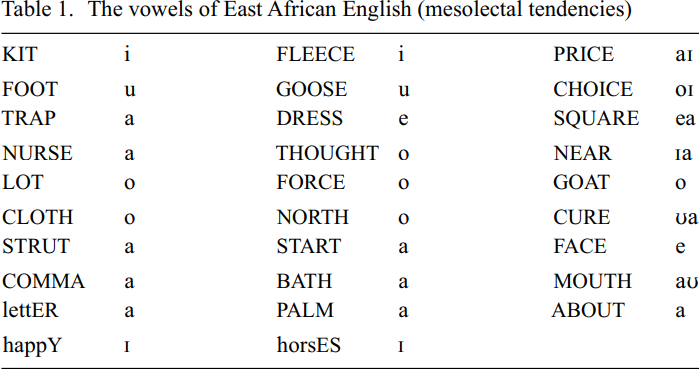

Grammar


Tenses


Present

Present Simple

Present Continuous

Present Perfect

Present Perfect Continuous


Past

Past Continuous

Past Perfect

Past Perfect Continuous

Past Simple


Future

Future Simple

Future Continuous

Future Perfect

Future Perfect Continuous

Passive and Active


Parts Of Speech


Nouns

Countable and uncountable nouns

Verbal nouns

Singular and Plural nouns

Proper nouns

Nouns gender

Nouns definition

Concrete nouns

Abstract nouns

Common nouns

Collective nouns

Definition Of Nouns


Verbs

Stative and dynamic verbs

Finite and nonfinite verbs

To be verbs

Transitive and intransitive verbs

Auxiliary verbs

Modal verbs

Regular and irregular verbs

Action verbs


Adverbs

Relative adverbs

Interrogative adverbs

Adverbs of time

Adverbs of place

Adverbs of reason

Adverbs of quantity

Adverbs of manner

Adverbs of frequency

Adverbs of affirmation


Adjectives

Quantitative adjective

Proper adjective

Possessive adjective

Numeral adjective

Interrogative adjective

Distributive adjective

Descriptive adjective

Demonstrative adjective


Pronouns

Subject pronoun

Relative pronoun

Reflexive pronoun

Reciprocal pronoun

Possessive pronoun

Personal pronoun

Interrogative pronoun

Indefinite pronoun

Emphatic pronoun

Distributive pronoun

Demonstrative pronoun


Pre Position


Preposition by function

Time preposition

Reason preposition

Possession preposition

Place preposition

Phrases preposition

Origin preposition

Measure preposition

Direction preposition

Contrast preposition

Agent preposition


Preposition by construction

Simple preposition

Phrase preposition

Double preposition

Compound preposition


Conjunctions

Subordinating conjunction

Correlative conjunction

Coordinating conjunction

Conjunctive adverbs


Interjections

Express calling interjection


Grammar Rules

Preference

Requests and offers

wishes

Be used to

Some and any

Could have done

Describing people

Giving advices

Possession

Comparative and superlative

Giving Reason

Making Suggestions

Apologizing

Forming questions

Since and for

Directions

Obligation

Adverbials

invitation

Articles

Imaginary condition

Zero conditional

First conditional

Second conditional

Third conditional

Reported speech


Linguistics

Phonetics

Phonology


Semantics


Pragmatics

Linguistics fields

Syntax

Morphology

Semantics

pragmatics

History

Writing

Grammar

Phonetics and Phonology

Semiotics


Reading Comprehension

Elementary

Intermediate

Advanced


Teaching Methods

Teaching Strategies
Vowels
المؤلف:
Josef schmied
المصدر:
A Handbook Of Varieties Of English Phonology
الجزء والصفحة:
927-52
2024-05-20
1144
Vowels
A comparison of the English phoneme system with that of most African languages shows that the major difference are not the consonants but the few vowel contrasts compared to the extensive English vowel system. Thus the vowel system of EAfE deviates systematically, vowels tend to merge, because the extreme range of the English vowel continuum is not covered by the underlying African systems of, for instance, the Bantu languages. On the whole three basic generalizations may be made for English vowels:
(a) Length differences in vowels are levelled and not used phonemically; thus FLEECE and KIT, GOOSE and FOOT, THOUGHT and NORTH, and BATH, STRUT and TRAP tend to merge. This is not only a quantitative, but also a qualitative shift, as usually short vowels in EAfE are longer and more peripheral than in RP, especially /ɪ/ tends towards /i'/ , /ʊ/ towards /u'/ , /ɔ/ towards /o'/ and /Λ/ and /æ/ towards /a'/.
(b) The central vowels of STRUT, NURSE and lettER, are avoided and tend towards half-open or open positions of BATH and, less often, DRESS. This conforms to the tendency towards more extreme articulatory positions of the tongue in general. It leads (together with the syllable-timing, to the phenomenon that, whereas vowels in full syllables tend to be underdifferentiated, those in unstressed ones may be overdifferentiated. Hence the difference between policeman and policemen or between the suffixes -ance and -ence may be clearer than in Standard English.
(c) Diphthongs tend to have only marginal status and to be monophthongized. In the short closing diphthongs MOUTH and particularly FACE the second element is hardly heard in many African varieties (as in Scotland; thus coinciding almost with the DRESS vowel). Diphthongs with a longer glide are preserved, but they are not really pronounced as falling diphthongs, i.e. with less emphasis on the second element than on the first, but rather as double monophthongs (e.g. [oɪ] , [aʊ]). All the centring diphthongs (NEAR, SQUARE, CURE) tend to be pronounced as opening diphthongs or double monophthongs ( [ɪa, ea, ua] ; cf. tendency (b) above).
These general observations on vowel pronunciation seem to hold for so many African varieties that this cannot be interpreted merely as a product of mother-tongue interference. In fact, some of these features of “Africanization” have already been predicted by Gimson (1980: 306) in very general terms, i.e. without any reference to Africa, because of the particularly complex structure of the English vowel system:
… the full systems [20 vowels and 24 consonants] must be regarded as complex compared with the systems of many other languages. In particular, the opposition of the close vowels /i:/-/i/, /u:/-/u/, the existence of a central long vowel /з:/ and the delicately differentiated front vowel set of /i:/-/i/-/e/-/æ/ + /Λ/ , together with the significant or conditioned variations of vowel length, will pose problems to many foreign learners.
Finally, it is worth considering the vowel system as a whole (in terms of Wells 1982). In contrast to West African varieties, which tend towards a basic seven-vowel system, East African varieties tend towards a basic five-vowel system (Table 1).

An interesting single parameter in this respect is the deviation of the RP long central NURSE vowel: it tends toward a back vowel /ɔ/ in West African varieties, towards a front vowel /a/ in Eastern and towards /e/ Southern African varieties, but these tendencies are not uniform in a region, neither across all ethnic groups, nor across the lexicon, as in Tanzania girl tends towards front (DRESS) and turn towards back pronunciation (START) because of spelling pronunciation.
 الاكثر قراءة في Phonology
الاكثر قراءة في Phonology
 اخر الاخبار
اخر الاخبار
اخبار العتبة العباسية المقدسة

الآخبار الصحية















 (نوافذ).. إصدار أدبي يوثق القصص الفائزة في مسابقة الإمام العسكري (عليه السلام)
(نوافذ).. إصدار أدبي يوثق القصص الفائزة في مسابقة الإمام العسكري (عليه السلام) قسم الشؤون الفكرية يصدر مجموعة قصصية بعنوان (قلوب بلا مأوى)
قسم الشؤون الفكرية يصدر مجموعة قصصية بعنوان (قلوب بلا مأوى) قسم الشؤون الفكرية يصدر مجموعة قصصية بعنوان (قلوب بلا مأوى)
قسم الشؤون الفكرية يصدر مجموعة قصصية بعنوان (قلوب بلا مأوى)

















